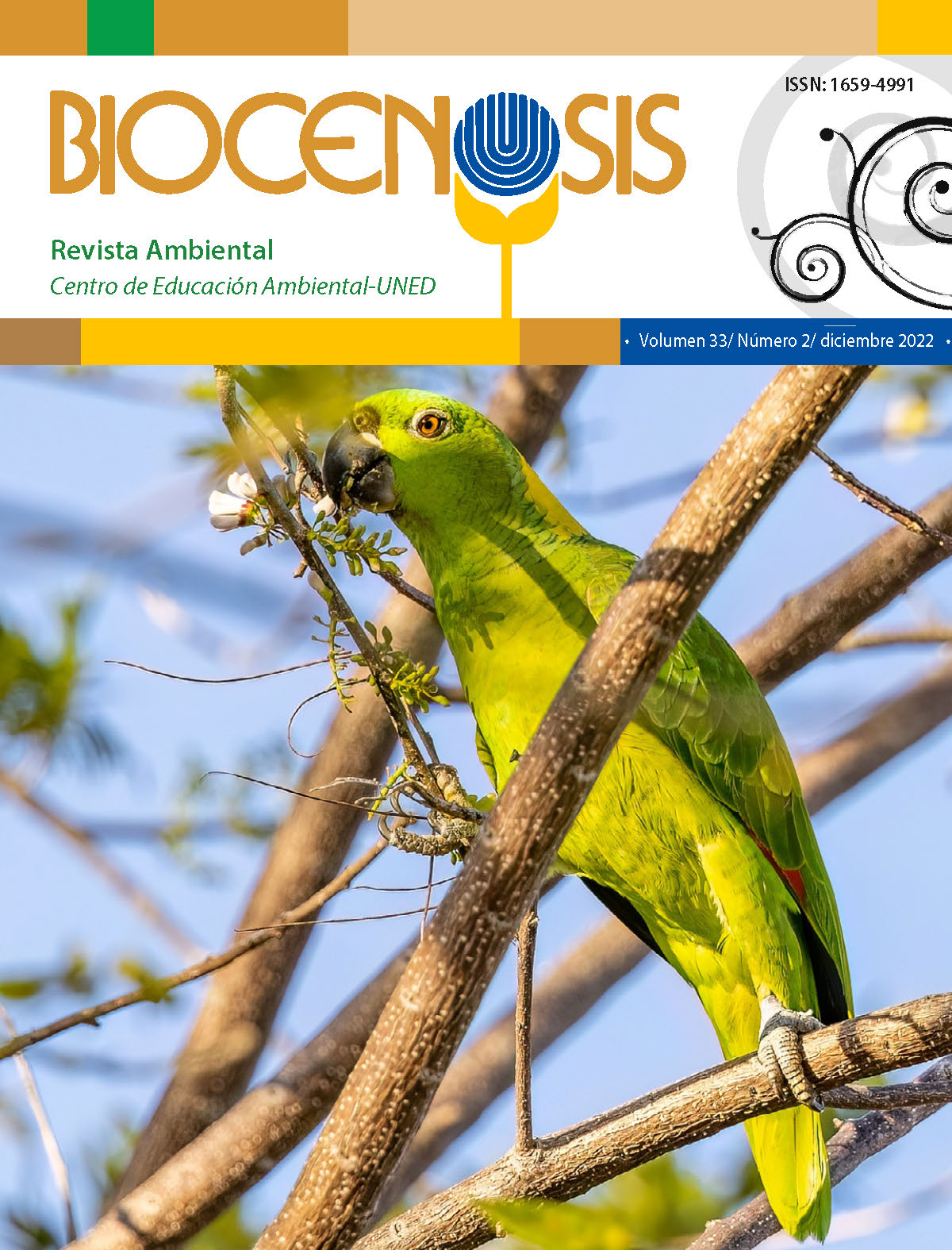Análisis de nicho ecológico de Amazona auropalliata (Psittaciformes: Psittacidae) y Quiscalus mexicanus (Passeriformes: Icteridae) en Costa Rica
DOI:
https://doi.org/10.22458/rb.v33i2.4537Palabras clave:
aves, distribución, nicho, especie invasora, variables bioclimáticasResumen
Se analizaron bases de datos de observaciones humanas de las especies Amazona auropalliata (amazona nuca amarilla) y Quiscalus mexicanus (zanate) en el territorio costarricense, como área de interés, así se conoció el patrón de distribución geográfica y su influencia en el solapamiento de nicho de ambas especies. Se usaron 20 variables bioclimáticas y, mediante el programa RStudio, se conocieron las correlaciones principales entre todas las variables para cada una de las especies del estudio. La especie invasora Quiscalus mexicanus muestra una amplia expansión de distribución geográfica ya que puede adaptarse a zonas de gran perturbación ambiental ocasionada por los seres humanos, tal como la urbanización o las actividades agrícolas, además tolera los cambios climáticos, mientras que la Amazona auropalliata tiene una distribución restringida de acuerdo con su alimentación y anidación. Por tanto, se puede intuir que la especie invasora podría influir en la disminución de las poblaciones de Amazona auropalliata, la cual es encuentra en peligro de extinción de acuerdo con la IUCN (2020).
Publicado
Cómo citar
Número
Sección
Licencia

Esta obra está bajo una licencia internacional Creative Commons Atribución-NoComercial-CompartirIgual 4.0.
